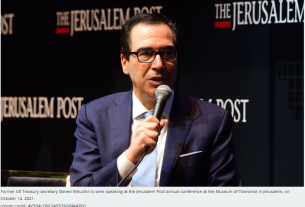Cryptocurrency advocates often hail its great advantage over physical money: the ability to traverse borders in nanoseconds with no regard for jurisdictions – just like email. For low-and-middle income individuals living in crisis contexts where transactions to and from abroad are severely restricted, this ability has the power to make cryptocurrency an inclusive substitute for the formal financial system.
As the world attempts to understand the pros and cons of cryptocurrencies more broadly, widespread sanctions recently imposed on the Russian financial system revealed shortcomings in cryptocurrency’s current ability to improve inclusion – mainly, that all crypto users and the exchanges on which they rely inhabit the offline world where the traditional financial system still holds sway.
The isolation of the Russian financial system prompted customers to look for alternative solutions
The swift and extensive sanctions placed on Russian banks in February 2022 set off a chain reaction. They prompted the Central Bank of Russia to impose limits on international transfers to preserve its foreign exchange reserves and within a few weeks, sending money to or from Russia had become nearly impossible. Even though limits have since been relaxed, the fact that many banks have been cut off from SWIFT and others have charged prohibitively high fees for transfers has made it cost-prohibitive, if at all possible, to transfer smaller amounts. The elderly and the less tech-savvy found it particularly difficult to identify or use alternatives such as cryptocurrencies. Faced with the sudden high costs and/or the inability to move money across borders, those who could began exchanging their rubles for cryptocurrency, on which there were initially no limitations.
Even prior to the extensive sanctions placed on Russian banks, however, Russians had shown themselves to be remarkably open to cryptocurrencies, with up to 12% of the population holding them. In mid-February, as Russian soldiers massed on the Ukrainian border, in view of possible disruptions to traditional payment systems, ruble-Bitcoin trading volumes in Russia doubled on Binance – the largest exchange platform in the world. Post-invasion, trading peaked at about four times its historic volume.
Despite its promise, crypto did not enable most users to fly free of the constraints placed on the formal financial system
In April, the hammer dropped. Under pressure from the West which saw crypto as a way to circumvent sanctions, Binance announced it was curbing its services in Russia, shutting down the accounts of its major clients in the country, and capping its offerings for Russian citizens or companies based in Russia to the equivalent of 10,000 euros, in line with EU sanctions.
Thousands of cryptocurrency accounts were put into withdrawal-only mode, and neither deposits nor trading were permitted any longer, with Russian individuals and legal entities whose balances exceeded 10,000 euros granted 90 days to close their positions. In early May, due to unprecedented demand for its services, Visa and Stripe suspended their virtual Bankoff payment cards which were still used by Russians to receive funds abroad. These Bankoff cards had allowed for top-ups in cryptocurrency using bots in messaging applications like WhatsApp or Telegram, linking crypto with traditional payment cards.
Crypto is not yet ready for mass market adoption and is particularly unsuited to low-income users
The sanctions regarding crypto assets did not impact non-sanctioned Russians who could demonstrate their residence outside the country. In practice, they meant that the Russian diaspora and dual citizens (many of whom had high incomes and owned property abroad) were still able to transact using cryptocurrencies. As explained in a previous blog, many low-income migrants with accounts in their home countries were still able to transact through the Russian payment system, extending its reach to those countries (without needing cryptocurrencies).
Yet for the vast majority of middle- and low-income Russian citizens, including those who were keen on receiving remittances to cope with surging prices and unemployment, cryptocurrencies fell short in every way. They weren’t accepted for goods or services, weren’t readily convertible for cash, and were limited as a means of transfer and savings due to the 10,000 euro cap.
Despite a promising 76% of transactions made by Russians in the past year being digital, cryptocurrency payments have never been allowed as a means of payment, and the ecosystem to use them was therefore never developed. Thus, while cryptocurrencies certainly held the potential for change, they were still very much tethered to the traditional financial system, and this limited – and continues to limit – their ability to provide much additional financial inclusion.
For change to become effective in the daily lives of low- and middle-income individuals, and of newly impoverished people in crisis situations, cryptocurrency must be able to serve the primary purposes of currency: to be commonly accepted as a medium of exchange, store of value, and a unit of account. In more contemporary language, it must serve as a means of payment for the majority. This is not yet the case for Russians – or anyone else – trying to send money abroad or anywhere else. While it is a fantastic tool for transfers, cryptocurrency is not yet easily accessible to the majority of the population nor proven to be good as a store of value if not linked to a stable currency — and low-income populations can ill-afford to suffer from losses in value.
In short, there is still some way to go for cryptocurrency to also be able to serve the purposes of low- or even middle-income people.



